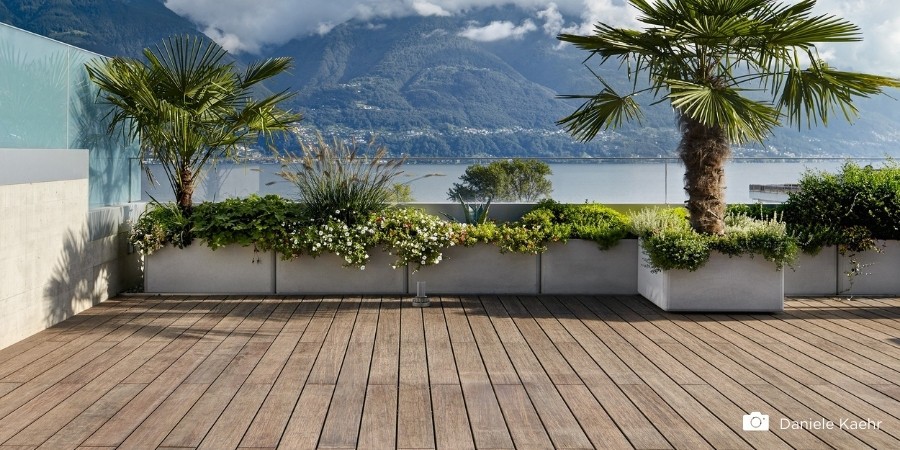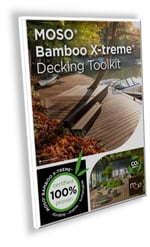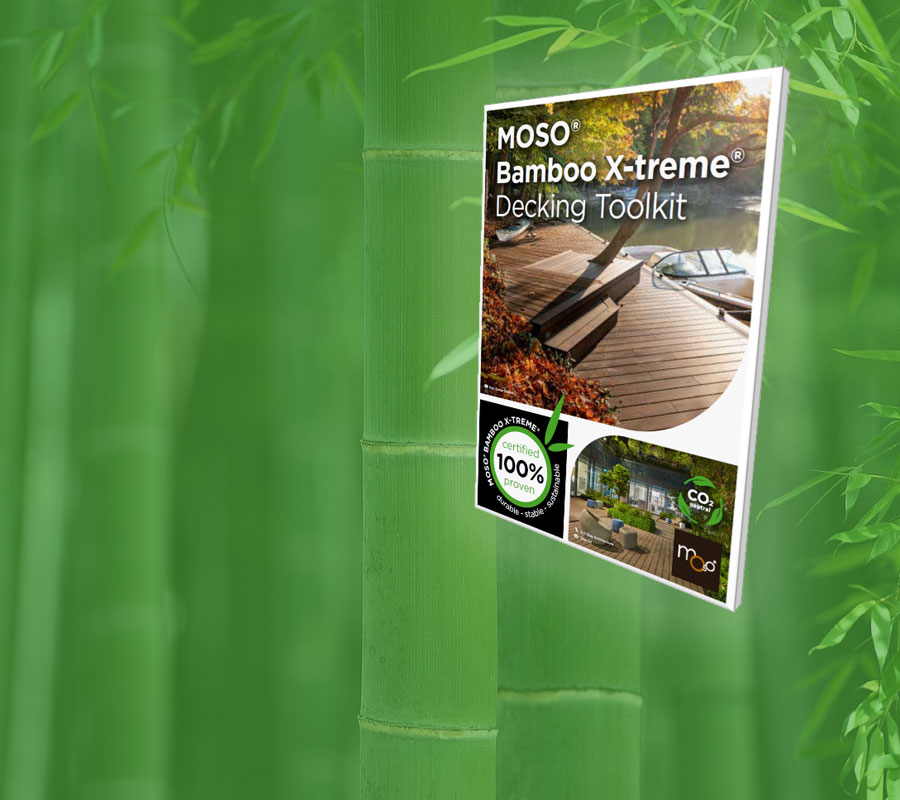The process of buying a terrace involves a lot more than just selecting the material. Of course, price plays an important role in this. In order to make an accurate calculation of the costs involved in a complete bamboo terrace, among others, the following should be considered:
- Choosing the right bamboo decking boards
- The cost of the chosen bamboo decking boards
- The cost of the substructure
- The cost of the fasteners
- The cost of installation
- Recurring maintenance costs
Based on years of experience in the supply of bamboo decking boards, we can aid with creating a global estimate of the costs involved. For a quotation, we will gladly put you in contact with the right supplier.
The right bamboo decking boards for your project
The cost of bamboo decking boards depends on the choices you make. We assume that you choose MOSO® decking boards, but even then you have a choice of:
- Different widths: 137, 155 and 178 mm. In general, it can be said that the price per m² of wider boards is slightly higher, but the installation costs are slightly lower.
- Various profiles for installation with clips (MOSO® or Grad).
- Different surfaces: smooth, ribbed, brushed or Curved. Curved is slightly more expensive but also provides an advantage in the installation because no slope is required.
The recommended retail price of MOSO® Bamboo X-treme® decking boards ranges from approx. €75,- to €150,- per m² excluding VAT. Subsequently, the cost of bamboo decking boards is determined by the transport and the point of purchase, where the transport costs of a low quantity of boards are relatively high. MOSO® does not deliver directly to end customers, therefore you will receive a quotation from a supplier. Please request a quotation for MOSO® Bamboo X-treme® decking here.
The cost of installing a bamboo terrace
Bamboo decking boards are always installed on a substructure and must be fastened with clips or screws. The cost of these materials, as well as the cost of installation, can be estimated, but heavily depends on the choices made.
Bamboo terrace substructure
The total weight of Bamboo X-treme® Decking boards is approx. 23 kilos per m². Both this weight, along with everything found on the terrace, should be more than adequately supported by the substructure. Depending on the stability of the underlying surface (i.e. the ground), sub beams on pedestals or sub beams on a foundation of support beams anchored in the ground can be chosen. It is important to choose a good substructure for a bamboo decking to ensure the substructure lasts at least as long as the decking boards. MOSO® recommends the use of Bamboo X-treme® beams on pedestals or posts, these beams are made of the same material as the decking boards. The cost of a substructure depends entirely on the choices made.
As an alternative, we regularly see applications of aluminium substructures. Ecologically a less logical choice, but with a large variety of aluminium substructure systems, a lot of time is saved when installing a frame, partly because aluminium beams are not pre-drilled, which is necessary with bamboo (and also hardwood).
Fixing bamboo decking boards to the substructure
A beautifully finished terrace consists of boards that are attached to the substructure in the right way, with the right materials and at sufficient points. There are various possibilities for this:
- Fastening with clips and screws: the clips are inserted into the grooves on the long sides of the boards and tightened to the lower beams with a screw. The clips are barely visible, can be easily released and have proven their durability in countless installed terraces around the world. For the finishing of the first and last plank on a terrace, start/end clips are available, so that no screw needs to be visible on the boards.
- Fastening with screws through the boards: stainless steel screws (minimum A2 quality) tighten the bamboo board to the sub beam. The screws are visible, unless they are finished with a prop. Fastening with screws is an economical solution, but because the bamboo boards have to be pre-drilled, the installation can take more time.
- Fastening with Grad clips: specifically profiled Bamboo X-treme® decking boards have been developed for this patented fastening system. The system consists of aluminium rails with plastic clips on which the boards are ‘clicked’ tight. The installation of the boards is fast but the total price for the materials is higher than for the other options.
MOSO® supplies specially developed asymmetrical fastening clips for decking boards. The clips have a three-point hook on one side and a corrugated hook on the other side. This fixes the board and allows the next board to be easily placed in the installation. The recommended retail price of the clips, including screws for a bamboo substructure, is approximately €7 to €15,- excl. VAT per m² of terrace, depending on the chosen fastener and width of the board.
Cost of a bamboo terrace installation
Installing a deck, of course, also consists of the installation of a substructure and the decking boards. When laying the substructure, consisting of a foundation and bamboo beams, it takes up to twice as much time as installing the decking boards on the substructure. The time required for installation depends mainly on the shape of the terrace. The installation of rows of beams and rows of decking boards is easy to estimate in terms of time. Finishing the deck with fascia boards (special boards without grooves) generally takes more time than expected.
It is important to choose an experienced professional, who is familiar with the installation instructions and local requirements, to ensure the terrace is installed correctly. Think, for example, of the slope that should be found throughout the terrace, from 1 to 2%. With Curved decking this is not necessary, but other profiles need a slope to prevent water from remaining on the decking boards for long periods of time. A good gardener or installer is experienced in this respect and also ensures the use of the right tools. With an average terrace, experienced installers can install 1 to 2 m² per hour incl. the substructure, decking boards and finishing.
Maintenance costs of a bamboo terrace
All natural materials require maintenance to extend their outdoor life. First of all, a terrace should be cleaned regularly to remove green deposits and other dirt and to ensure that the boards do not become slippery. The regularity of cleaning depends entirely on the location and use of the terrace and the surrounding vegetation. In addition to cleaning, MOSO® recommends annual maintenance of a terrace, especially in commercial applications. The maintenance means a terrace is provided with a new oil layer after cleaning. Ideally, the terrace should be cleaned annually after the winter with decking cleaner and provided with oil. With proper maintenance, a Bamboo X-treme® terrace will last for many years and the factory guarantee is 25 years. Bamboo X-treme® is one of the most durable natural decking boards and is a logical investment for a garden or roof terrace.
Bamboo Decking Toolkit
If you want to know all about the benefits and possibilities of bamboo decking, we offer you our complete Decking Toolkit. This document includes all information about the material, the installation, the maintenance and what you can expect from a decking that is both sustainable and durable.












%20Picture%20by%20Tim%20Baynham%20-1.jpg?width=600&height=300&name=2021006%20LR%20(20)%20Picture%20by%20Tim%20Baynham%20-1.jpg)
